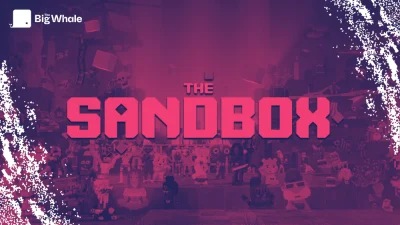The rise of stablecoins is transforming the payments sector and accelerating the shift towards transactions carried out directly on blockchains. Faced with this development, incumbent players such as Visa and Mastercard are not standing on the sidelines: they are gradually opening up to cryptocurrencies and stepping up initiatives in the ecosystem.
For these payment infrastructure giants, the challenge is to deal with a new technological stack where stablecoins are the currency of exchange, where a transactional layer enables funds and capital to circulate, and where public blockchains offer processing speed, decentralised security and near-instantaneous settlement.
Aware of the disruptive nature of this dynamic, Visa and Mastercard are favouring a partnership approach. This strategy enables them to both remain at the heart of innovation and preserve their business models in the face of profound changes in the payments market.
Mastercard in a few figures With a valuation in excess of 500 billion dollars, Mastercard has established itself as one of the world's leading payment infrastructure players.
Its model is particularly profitable: once the network is in place, each transaction generates additional revenue without requiring heavy investment. Operating margins regularly exceed 50% (57.96% in 2023, then 58.41% in 2024), while the net margin is around 45%. In 2024, the company recorded revenue growth of 12.23%, reaching $28 billion.
The model is based on four participants: the cardholder (consumer), the issuing bank, the merchant who accepts payments, and the merchant's acquiring bank. All are connected via Banknet, Mastercard's proprietary network, which manages processing, settlement and associated services.
The group charges a variety of fees related to transaction integrity, account status enquiries or address verifications. But the main source of revenue remains assessment fees: fees paid by issuing banks (and sometimes acquirers) in exchange for access to the network and use of the brand.
Mastercard generally charges between 1.15% and 2.5% of the total volume of payments, plus a fixed amount of between $0.05 and $0.10 per transaction.
International transactions account for a significant proportion of business, as they incur higher fees due to their complexity.
>> Patrick Mollard (Fipto): "International payments: the concrete impact of blockchain"
Mastercard's crypto strategy Mastercard's ambition is to adapt its payment infrastructure by integrating blockchains and cryptocurrencies.
In a context marked by the rise of stablecoins, the company is banking on a strategy of partnerships to diversify its revenues, protect its existing model and remain a central player in the transformation of payments. This approach also aims to support the regulated adoption of digital assets and strengthen its role in the data and identity layers.
The initiatives already deployed focus on several areas: Crypto Credentials, the Multi-Token Network (MTN), the integration of stablecoins and MNBCs, as well as crypto payment cards developed with a number of industry players. Added to this is a consultancy programme for start-ups, enabling Mastercard to extend its influence by helping start-ups to develop via its network of partners.
The Crypto Credentials scheme is a digital identity system designed to secure transactions on blockchain. It guarantees that users, wallets and service providers are verified and compliant before any operation.
In practical terms, the system is based on three components.
The first is identity verification, which ensures that the sender and recipient are validated entities in order to reduce the risk of fraud.
The second is an alias system, which simplifies payments by allowing cryptos to be sent to a short identifier rather than a long address. In the background, the system checks the compatibility of portfolios, the assets supported, as well as regulatory compliance (KYC, anti-money laundering and sanctions).
Finally, a network of trusted participants (exchanges, wallet providers and financial institutions) completes the package.
The Multi-Token Network (MTN) is one of Mastercard's structuring projects. It is a permissioned framework, interoperable with multiple blockchains, for financial institutions, governments and fintechs.
The MTN supports different types of assets: tokenised bank deposits, regulated stablecoins such as USDC, MNBC and digital financial securities. The aim is to provide an infrastructure capable of supporting the issuance of MNBCs when central banks are ready, while enabling the deployment of smart contracts. Designed to work with Crypto Credentials, the network incorporates compliance mechanisms (AML, KYC, sanctions) and aims to ensure settlements between public and private blockchains.
For the time being, MTN is still in the test phase and has not switched over to production.
Crypto cards and On/Off-Ramp solutions Mastercard is working with several industry players (MetaMask, Kraken, Gemini, Bitget, Bit2Me and Uphold) to issue crypto payment cards. These allow users to spend their digital assets at affiliated merchants, while the final settlement is made in fiat currency.
The way it works differs depending on the type of wallet. For a wallet hosted by an exchange platform, the card automatically triggers the sale of cryptos in order to convert them into fiat, generating a tax event in the process.
For a non-custodial wallet, the process is more complex: the user must delegate authorisation to a smart contract, which checks the balance, performs the conversion and initiates payment via a partner such as Monavate.
These cards are available in debit and credit versions, with some even allowing credit to be repaid directly in crypto. At the same time, Mastercard is working with on-ramp and off-ramp providers, such as MoonPay, to offer simple gateways between traditional currencies and cryptocurrencies.
>> Crypto payment cards: the 2025 comparison
>> EtherFi: How relevant is this DeFi neobank's business model?
Mastercard's strategic conviction Mastercard's strategy in digital assets is based on one conviction: blockchain, stablecoins and tokenised assets will redefine global payments by making them faster, safer and more efficient.
To prepare for this, the company is leveraging partnerships with Circle, OKX and JPMorgan to gradually integrate these technologies into its network. The aim is to become a hybrid infrastructure provider, combining the world of traditional bankcards with that of digital payments.
The pillars of this strategy are clear: tokenisation to enhance security and improve the user experience, strict compliance with the regulatory frameworks currently being adopted, and the construction of a digital identity network (Crypto Credentials) to secure transactions.
Mastercard also highlights fraud detection tools based on artificial intelligence, and a selection process for stablecoin issuers that complies with legislation such as the GENIUS Act in the US. Relying on more than a billion cardholders and 150 million affiliated merchants, the company aims to create a network effect around stablecoin payments.
As Christian Rau, head of crypto at Mastercard Europe, explains to The Big Whale: "Our strategy hasn't changed in 50 years: enable people to pay and businesses to be paid in a simple, secure and compliant way. This principle remains valid, whatever the means of payment. Our role is to provide security and fluidity, whether you buy shoes with a bank card or use a stablecoin like the USDC. We don't see crypto as a total disruption, but as just another payment technology. If digital assets can improve payments, it's in our interest to integrate them."
Risks and challenges This strategy comes with significant risks, particularly from a regulatory and competitive perspective. Frameworks such as the US GENIUS Act or MiCA in Europe provide initial clarification, but international divergences could increase compliance costs or restrict certain activities.
Strict regulation of stablecoins or exchange platforms can reduce systemic risks, but it could also slow innovation if the rules become too restrictive. The balance between innovation and protection (against fraud, money laundering or scams) remains central.
Competition is also head-on. The volume of stablecoin transactions surpassed that of Mastercard and Visa combined in 2024, reaching $27.6 trillion.
>> Dashboard - Stablecoin Volumes vs Traditional Payment Systems
As a settlement layer, these assets offer large merchants such as Amazon or Walmart the opportunity to reduce their costs, with the risk of bypassing existing networks. This could undermine part of Mastercard's business model, which is based on commissions charged on each transaction.
Faced with this risk, Christian Rau qualifies: "We see stablecoins as a settlement technology. They can speed up payments, reduce exchange risk and improve cross-border transactions. But they are not a substitute for all the services we provide: protection, the possibility of dispute, a clear interface with the user. If you buy a bike on a Portuguese website using your card and it never arrives, you have recourse. With a simple transfer in stablecoins, you don't."
Mastercard also has to contend with technological competition from public blockchains. These offer processing speed, near-instant finality, security with no single point of failure and immutability. These are all characteristics that are forcing the company to evolve in order to maintain its place in a rapidly changing sector.
Competition: a duopoly under pressure Mastercard operates in a market largely dominated by a duopoly with Visa, its main competitor. The latter began exploring the use of crypto-assets as early as 2021, focusing on stablecoins. The company quickly identified their potential as a settlement layer thanks to their speed, ability to scale, economic security and decentralised nature.
As early as 2021, Visa settled USDC transactions on Ethereum, in partnership with Anchorage Digital and Crypto.com . The company then expanded its reach by integrating Solana as a second settlement blockchain for USDC.
More recently, it launched the Visa Tokenized Asset Platform (VTAP), designed to cover real-world asset tokenization (RWA), a segment that is experiencing strong growth and increased adoption.
Visa has also stepped up initiatives around stablecoins by partnering with Bridge (now part of Stripe) to issue stablecoin-backed Visa cards in Latin America. The aim is to facilitate access to the dollar in countries hit by hyperinflation, and to accelerate the use of stablecoins as an everyday payment tool.
Mastercard and Visa growth rates 2023-2024 - Source: SeekingAlpha Financially, Mastercard outperforms Visa in terms of operating margins and free cash flow margin, as well as revenue growth. Conversely, Visa maintains higher profitability and is growing faster than its competitor.
When it comes to crypto-asset strategies, both groups are moving in the same direction but with distinct choices. Mastercard is looking to replicate its card network model directly on the blockchain. To do this, the company is banking on its Crypto Credentials, an interoperable infrastructure called the Multi-Token Network, and fiat/crypto payment and conversion solutions developed with a wide range of partners (exchanges, wallets and protocols).
Visa is taking a different approach. Rather than building its own infrastructure, the company is directly testing the effectiveness of public blockchains such as Ethereum and Solana, in order to assess their capabilities in terms of finality and processing speed.
This strategic distinction marks the main difference between the two players: where Mastercard builds a proprietary framework, Visa chooses to exploit what already exists in order to measure its potential as a settlement layer.
>> The crypto strategy of Stripe, the new industry giant
>> John Egan (Stripe): "We want to build a global network for payments and cash"
The outlook for Mastercard's crypto strategy Mastercard has already laid the foundations for its positioning in the on-chain payments infrastructure. The next logical step for the company would be the full implementation of the Multi-Token Network (MTN), combined with a large-scale rollout of stablecoin settlements.
Such a development would pave the way for new revenue streams, via MTN usage fees, stablecoin payment commissions and the monetisation of its tokenisation infrastructure.
Eventually, some observers believe that MTN could evolve into a proprietary Layer 2 solution, built for scale, in the image of Base launched by Coinbase.
Christian Rau, head of crypto at Mastercard, tempers this prospect, however: "To my knowledge, there is no internal project of this type at Mastercard. This does not mean that the idea is absurd, but our approach is different. We are historically an infrastructure company that values interoperability. We believe that many public or private blockchains already make it possible to build useful services, without creating an additional chain."
He adds, "That said, nothing is ruled out. If, in the future, no existing solution meets the needs of our network or our partners, we might consider developing a specific infrastructure. But for the moment, we are making progress with our partners (fintechs, protocols, issuers) to design appropriate solutions. Innovation does not necessarily mean owning the entire chain, but being able to federate, connect and orchestrate the best components available. That's what we've been doing for 50 years and what we'll continue to do with crypto."
Mastercard also plans by 2030 to do away with manual entry of card numbers for online payments, through widespread tokenisation of integrated payments, whether in apps, vehicles or connected objects.
Strengthening partnerships with established crypto projects should also consolidate its position in the crypto card segment, where the company already has a head start thanks to its network and integration capacity.
The Big Whale's opinion The payment industry is undergoing a profound transformation driven by stablecoins and public blockchains. The volumes speak for themselves: even taking into account automated or recycled transactions, the dynamic remains impressive. In some respects, Mastercard and Visa cannot compete.
Public blockchains offer superior processing speed and near-instant finality. What's more, transferring stablecoins from wallet to wallet on networks such as Solana, Base or Arbitrum is much cheaper than using traditional infrastructures. What's more, these transactions are beyond the direct control of governments and cannot be blocked or cancelled by a centralised player.
In a world where everything is moving on-chain, users will naturally gravitate towards the fastest and cheapest solution.
However, Mastercard is seeking to retain a central role. Its strategy is based on partnerships with major projects and on delivering efficiency: simplifying usage, improving the user experience, compliance tools, combating fraud, and implementing solutions designed to appeal to crypto-native players and institutions alike.
Although still in the testing phase, the overall strategy is nevertheless clear: build a payment infrastructure suited to the age of digital assets. Despite increasing competition and recent stock market pressure, Mastercard continues to show solid growth and is benefiting from a methodical roll-out of its roadmap.
>> The Big Whale report - How payment specialists are integrating digital assets








